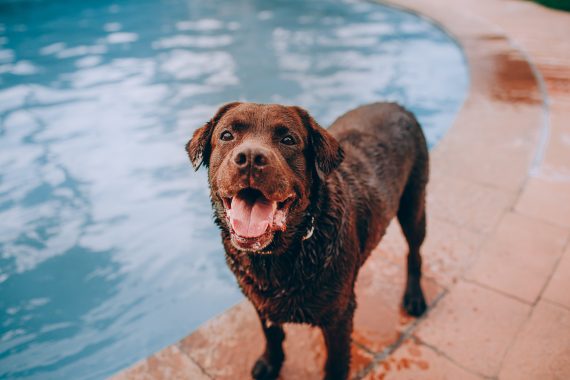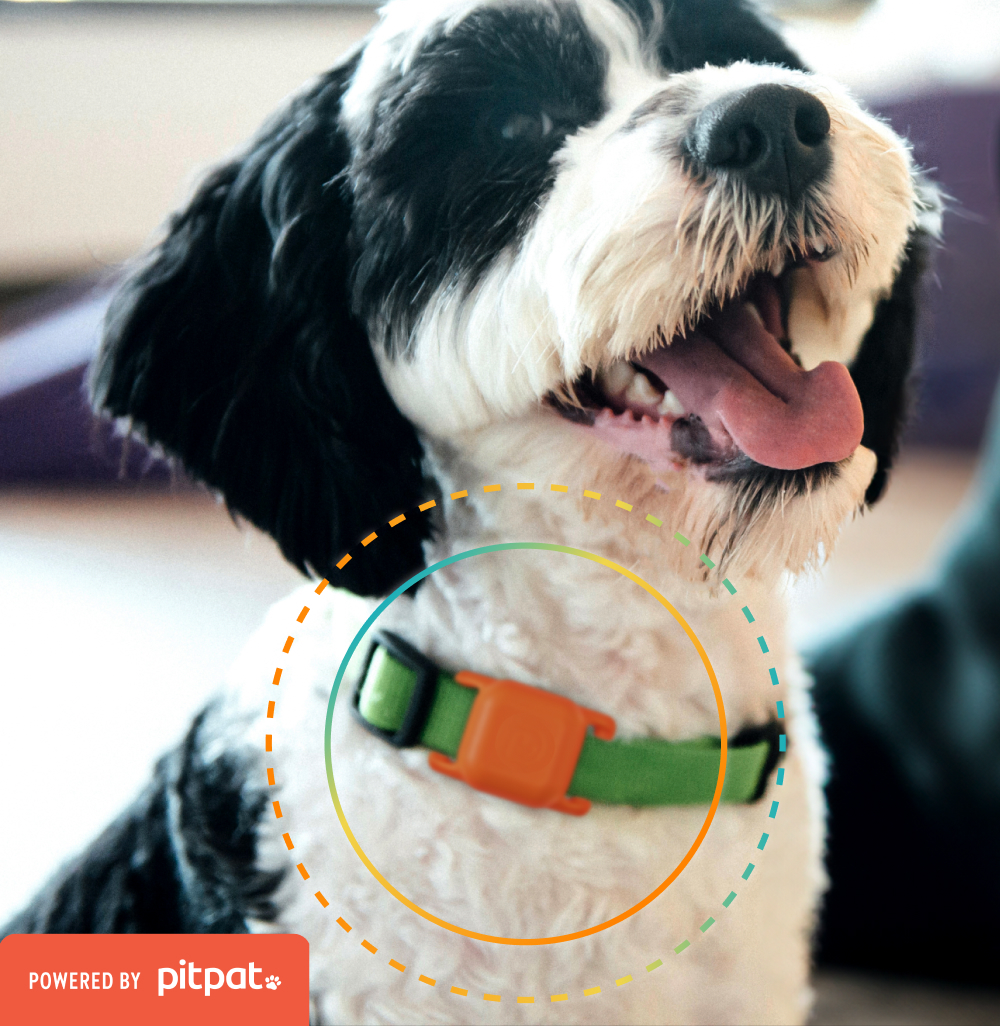Hot Tips to Keep Your Dog Cool This Summer

Summer is in full swing and in addition to ensuring your pup has enough water in their dish and protecting the pads of their paws from the harsh outdoor temperature, a dog’s thermoneutral zone should also be taken into consideration to keep your family pets healthy and happy during warmer months.
What is a dog’s thermoneutral zone and why do we need to keep it in mind?
Lorraine Rhoads, Dogtopia’s Environmental Biologist, explains the thermoneutral zone as a “normal range of temperatures at which dogs can maintain their body temperature without expending energy to increase heat production or heat loss.” This temperature range for dogs is set between 68°F (20° C) and 86° F (30° C).
If the air temperature is warmer than a dog’s body temperature, the dog will absorb more heat from their surroundings. This extra heat must be lost usually through means of the feet and nose, but once temperatures rise above 87°, the heat can no longer only escape through the skin.
As humans, we know when the temperature begins to rise, it takes us longer to cool down once we return indoors or to a shaded area. The same is true with dogs, however, it must be taken a bit more seriously as their bodies are not able to handle a high amount of excess heat in the same way as humans. Once dogs can no longer lose heat through their paws and nose, heat loss by evaporation via panting will become the only solution for a dog to cool itself at a faster rate. Other factors can reduce the effectiveness of panting. These include increased humidity, dehydration, and upper respiratory tract complications such as brachycephalic airway syndrome.
(Note: Brachycephalic breeds may have genetic, breed-specific features such as narrowed nostrils and elongated soft palates which make it trickier for them to breathe. These breeds include the Boxer and Pit Bull among many other short-nosed breeds.)
Did you know the length of a dog’s nose directly relates to how cool air will be when it is inhaled?
Most brachycephalic breeds have shorter noses which means they are simply unable to cool the air they inhale as easily as longer snouted breeds. Think about it: A dog with a longer nose will be able to inhale and cool the air for a longer duration of time than a dog with a shorter nose because it has more time to move through the nose before entering the lungs. To simply state it, dogs with shorter noses will breathe in warmer air in the summer because the air has less time to cool before entering the lungs.
Also, a shorter faced dog’s elongated soft palate may be irritated by excessive panting and airborne allergens which can cause the airways to swell and sometimes constrict. Excessive panting that is not addressed may lead to Brachycephalic Airway Syndrome or BAS. BAS is the closing of the dog’s airway which is a veterinary emergency. It is important to note the risk for overheating is not limited to brachycephalic breed, but also for older dogs, breeds with thick coats, and overweight dogs.
As the summer months remain warm, it is important to know the difference between heat stress, heat exhaustion, and heat stroke.
- Heat Stress: increase in thirst and panting
- Heat Exhaustion: heavy panting and weakness
- Heat Stroke: (emergency care required): anxiousness, excessive panting, restlessness, excessive drooling, unsteadiness, abnormal gum and tongue color, collapse
Safe summertime exercise your dog will love!
A great way for your pup to feel cool while getting their wiggles out this summer is to incorporate water into their play schedules. A small kiddie pool filled with a couple inches of water or a backyard sprinkler set is perfect to keep a dog at play while keeping their body temperature cool. Remember to take regular breaks to check if your dog is experiencing any signs or symptoms of heat stress, exhaustion or stroke as any outdoor exercise in the sun may cause a dog’s temperature to rise.
Please be aware a humid climate may play a significant role in how hot a dog may feel outside. Additionally, in warmer climates, please refresh yourself on the dangers of hot asphalt. This protects paws from receiving too much heat from warm asphalt or concrete and in turn creates a potential injury requiring time and possible medical attention to heal. A simple touch test can be conducted to determine if the ground your pup will be walking on is too hot for their paws. Place your hand to the asphalt or concrete for 7-8 seconds. If you are unable to keep your hand on the ground for the full 7-8 seconds, it is too hot for your dog.
At the end of the day, we want to remind all pet parents to be mindful and aware of their dog’s wellbeing to ensure a lifetime of happy tail wags and healthy bodies. If the weather in your area is too warm for your outdoor activities with your dog, consider dog daycare at Dogtopia! Our indoor playrooms are kept between 65-75°F and make for the perfect place for your dog to socialize and exercise with other like-minded dogs. Plus, our HVAC systems keep your pup the perfect temperature during playtime and nap time, and constantly circulate fresh and clean air to keep the facility odor-free. Ready to get your dog into daycare? Use our location finder to find a Dogtopia near you: https://www.dogtopia.com/location-finder/












